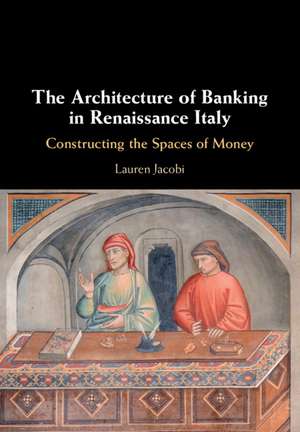The Architecture of Banking in Renaissance Italy: Constructing the Spaces of Money
Autor Lauren Jacobien Limba Engleză Hardback – 31 iul 2019
Preț: 683.09 lei
Preț vechi: 767.52 lei
-11% Nou
Puncte Express: 1025
Preț estimativ în valută:
130.73€ • 135.44$ • 109.10£
130.73€ • 135.44$ • 109.10£
Carte tipărită la comandă
Livrare economică 21 martie-04 aprilie
Preluare comenzi: 021 569.72.76
Specificații
ISBN-13: 9781108483223
ISBN-10: 1108483224
Pagini: 252
Ilustrații: 87 b/w illus.
Dimensiuni: 184 x 261 x 18 mm
Greutate: 0.23 kg
Editura: Cambridge University Press
Colecția Cambridge University Press
Locul publicării:New York, United States
ISBN-10: 1108483224
Pagini: 252
Ilustrații: 87 b/w illus.
Dimensiuni: 184 x 261 x 18 mm
Greutate: 0.23 kg
Editura: Cambridge University Press
Colecția Cambridge University Press
Locul publicării:New York, United States
Cuprins
1. Networked agglomerations; 2. The technology of money, architecture and the public good; 3. Across economic geographies: trade sites beyond the peninsula; 4. The transcendental economy.
Notă biografică
Descriere
Probes historical relationships between banks and religious beliefs, exploring urban geographies and architectural forms that reveal moral attitudes toward money during the early onset of capitalism.
